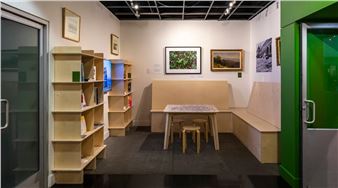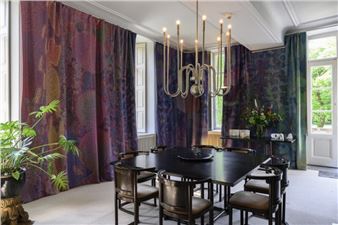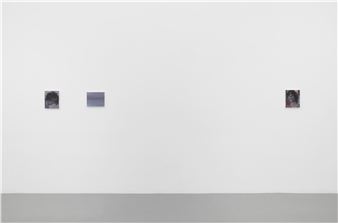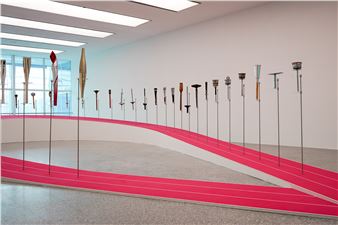Vivere Di Paesaggio
For some time now, the conditions imposed upon us have been shaping our lives. Whether itвАЩs the evening curfew, the threat of the virus or direct restrictions on our personal freedom, we don't know what will happen or when we will get out of this. We will get out of it. But we are constantly put to the test as we try to redefine our position and adjust the boundaries of our identity, in a scenario where it is hard to imagine what landscape we will find when we turn on the light again. In such conditions of uncertainty, Vivere Di Paesaggio!
Is an unstoppable cry that brings to life thoughts of freedom. What will be the new way of living off, and with, the landscape? What radical change will our way of life undergo, and, consequentially, what point of view will we be able to rediscover in relation to the landscape that surrounds us? Artists respond to the vulnerability and confusion generated by such a condition. The uncertainty and instability that we experience in our daily lives is expressed in their works, yet in this case, their invitation is like a joyful exit towards the unknown. For it has been too long, since we do not think about thinking the landscape in Europe.
In a world where the sum of objects produced by humans has exceeded the living biomass (animals and plants), the economics of biodiversity tells us that we are urgently in need of a change and that we must invest in the regeneration of the environment. We must preserve the planet and protect our landscape. The key role of the tree, its centrality, will have to become preeminent once again. Already, as noted by Mondrian. Let us gladly proceed once more down that path. It is time. The exhibition came about after a long period of dialogue with the artists on the issue, and it proposes four ways of understanding what concerns the thoughts around the notion of вАШlandscapeвАЩ for each of their personal artistic practice today. All the artists live and work here in Italy. Filippo Bisagni, Sergio Sarra, James Hillman and Giulia Mangoni belong to different generations, each putting forward their own point of view, indicating a sense of вАЬnew perspectives within the framework, ones which are presented as new tools through which to think about it and, above all, through which give it thought.вАЭ - Jullien, Vivre de paysage, Gallimard, 2014.
Today, the ray of sun reflected by the grass in a meadow near Manoppello, in Abruzzo, is just as poignant and precious as it enters Sergio SarraвАЩs studio. It cannot but become painting, transfigured into the enigmatic lines of his delicate creatures, which seem to embody a creative natural force, one quite independent of the yoke of man. Just as valuable is the four-headed sheep native to Ciociaria, which, together with the longmaned horses, are portrayed by Giulia Mangoni in an attempt to amplify the pre-existing and rare activity of a farm that works to save them from extinction. And still of vital importance, as Filippo Bisagni shows us, from within the forced closure of the domestic environment, is the light of the setting sun as painted by Titian, Giorgione or the Carracci brothers, to which he restores the greatest definition in his digital interiors.
Here the rural landscape, painted in the Italian Renaissance, remains the fulcrum and the key notion of the ideal escape, but at the same time real, in a historical moment in which interpersonal relationships are denied and sexuality is reduced to blurred pornography. That same unmistakable Italian light also animates James HillmanвАЩs luminous meditations; he observes it in the changing of the seasons at Isola del Liri, and in his intricate compositions, he imagines it as evoking endless spaces and superhuman silences, yet ones of living seasons and the present, imminent springtime.
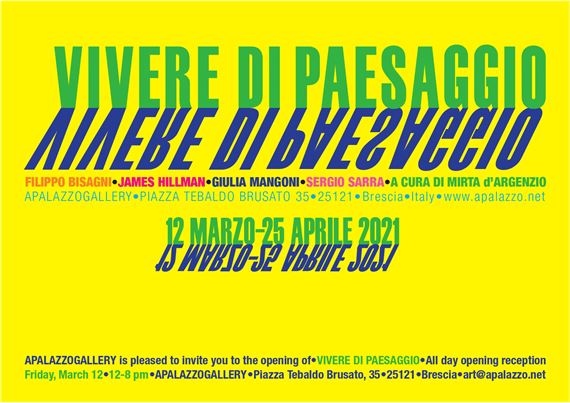
Recommended for you
For some time now, the conditions imposed upon us have been shaping our lives. Whether itвАЩs the evening curfew, the threat of the virus or direct restrictions on our personal freedom, we don't know what will happen or when we will get out of this. We will get out of it. But we are constantly put to the test as we try to redefine our position and adjust the boundaries of our identity, in a scenario where it is hard to imagine what landscape we will find when we turn on the light again. In such conditions of uncertainty, Vivere Di Paesaggio!
Is an unstoppable cry that brings to life thoughts of freedom. What will be the new way of living off, and with, the landscape? What radical change will our way of life undergo, and, consequentially, what point of view will we be able to rediscover in relation to the landscape that surrounds us? Artists respond to the vulnerability and confusion generated by such a condition. The uncertainty and instability that we experience in our daily lives is expressed in their works, yet in this case, their invitation is like a joyful exit towards the unknown. For it has been too long, since we do not think about thinking the landscape in Europe.
In a world where the sum of objects produced by humans has exceeded the living biomass (animals and plants), the economics of biodiversity tells us that we are urgently in need of a change and that we must invest in the regeneration of the environment. We must preserve the planet and protect our landscape. The key role of the tree, its centrality, will have to become preeminent once again. Already, as noted by Mondrian. Let us gladly proceed once more down that path. It is time. The exhibition came about after a long period of dialogue with the artists on the issue, and it proposes four ways of understanding what concerns the thoughts around the notion of вАШlandscapeвАЩ for each of their personal artistic practice today. All the artists live and work here in Italy. Filippo Bisagni, Sergio Sarra, James Hillman and Giulia Mangoni belong to different generations, each putting forward their own point of view, indicating a sense of вАЬnew perspectives within the framework, ones which are presented as new tools through which to think about it and, above all, through which give it thought.вАЭ - Jullien, Vivre de paysage, Gallimard, 2014.
Today, the ray of sun reflected by the grass in a meadow near Manoppello, in Abruzzo, is just as poignant and precious as it enters Sergio SarraвАЩs studio. It cannot but become painting, transfigured into the enigmatic lines of his delicate creatures, which seem to embody a creative natural force, one quite independent of the yoke of man. Just as valuable is the four-headed sheep native to Ciociaria, which, together with the longmaned horses, are portrayed by Giulia Mangoni in an attempt to amplify the pre-existing and rare activity of a farm that works to save them from extinction. And still of vital importance, as Filippo Bisagni shows us, from within the forced closure of the domestic environment, is the light of the setting sun as painted by Titian, Giorgione or the Carracci brothers, to which he restores the greatest definition in his digital interiors.
Here the rural landscape, painted in the Italian Renaissance, remains the fulcrum and the key notion of the ideal escape, but at the same time real, in a historical moment in which interpersonal relationships are denied and sexuality is reduced to blurred pornography. That same unmistakable Italian light also animates James HillmanвАЩs luminous meditations; he observes it in the changing of the seasons at Isola del Liri, and in his intricate compositions, he imagines it as evoking endless spaces and superhuman silences, yet ones of living seasons and the present, imminent springtime.

 ARTISTS
ARTISTS










